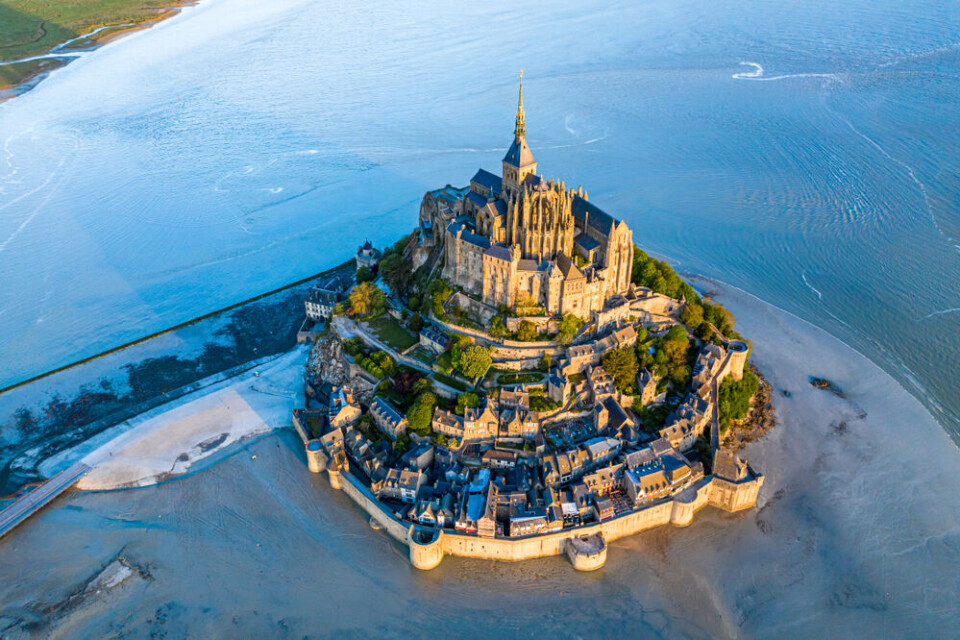-
Duck Cold! Four French phrases to use when it is freezing outside
We remind you of French expressions to use to describe the drop in temperature
-
When and why do we say le moral dans les chaussettes?
We explore this useful expression that describes low spirits
-
David Hockney among France’s New Year honours list
Former Normandy resident awarded second grade of honour
Seven facts about France's Mont-Saint-Michel abbey as it turns 1,000
We take a deeper look at Normandy’s most iconic landmark 1,000 years after construction began

An autumn of concerts and conferences is planned as Mont-Saint-Michel’s famous abbey celebrates its 1,000th birthday.
Construction began in 1023, and it has since become one of France’s most-visited tourist attractions.
Some 2.8 million people visited Mont-Saint-Michel in 2022, of whom 1.3 million visited the abbey.
The island is so popular that the Unesco World Heritage site introduced discount parking at certain times of the day in August to try to regulate the flow of tourists.
Read more: French attraction moves to tackle problem over overtourism
President Emmanuel Macron visited the abbey in June to mark the millennium, including a tour of The Archangel’s Abode exhibition.
This comprises 30 works of art and religious objects that shed a light on the monument’s history. It will continue until November 5.
Other events this month include a free dance performance, and a concert by pianist Sofiane Pamart.
The full programme of events can be found here.
To mark the anniversary year here are some lesser-known facts about the site:
1. Its history goes back more than 1,000 years
The first church was built there in 709, a year after the Archangel Michael appeared to the bishop Aubert in a dream and asked him to build a sanctuary on the island, then called Mont-Tombe, according to the legend.
The first Benedictine monks settled there in 966.
Read more: Has a longstanding mystery at Mont-Saint-Michel finally been solved?
2. There used to be a railway line
A railway line, albeit only 10km long, ran across the bay to the feet of the city’s walls.
La ligne de Pontorson au Mont-Saint-Michel was run as a tourist attraction between 1901 and 1938, with five to six trains a day during high season.
3. Normandy and Brittany claim it as their own
Mont-Saint-Michel is at the centre of local rivalries, as people in both Normandy and Brittany claim it as their own.
It did indeed belong to Brittany after the Treaty of Compiègne in 867 ceded the area to the then-kingdom.
The following century, Normandy regained control of the tidal island, and today it belongs to the Manche department.
However, that has not stopped it being associated with Brittany, including in a 2015 school textbook.
In 2018, the mayor of Mont-Saint-Michel caused controversy by hoisting the Breton flag next to the Norman one.
Read more: EU Council confuses Mont Saint-Michel as being in Brittany
4. Same stone paves London and Paris
The monument was built with the same stone used for pavements in London and Paris. Granite from the Chausey islands off the coast of Normandy was also used in many old houses on Jersey.
5. It was once a prison
The island was once nicknamed the ‘Bastille des mers’ (Bastille of the sea), as it has at various points been used to house prisoners, including during the Revolution.
Inmates included clerical opponents of the regime and other political prisoners. It did not close until 1863.
6. It has an English counterpart
A tidal island called St Michael’s Mount in Cornwall is its English counterpart.
In the 11th century this site was given to the Benedictine order of Mont-Saint-Michel, and construction of a church began in 1135.
7. Special sheep graze nearby
Lamb from the salt marsh meadows near Mont-Saint-Michel was registered Appellation d’origine protégée (AOP) in 2013.
The high salinity in the grass gives the meat a distinct taste that is considered a delicacy.
Related articles
France overtourism: five alternatives to the most popular destinations
Normandy wins ‘most desirable region’ for British tourists
French legends part 1: Beasts and beauty - stories from the north
























